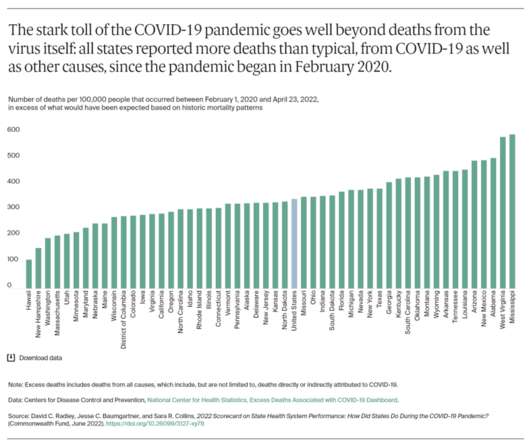The 2022 US Health System Report Card: Pretty Terrific If You Live in Hawaii or Massachusetts
Health Populi
JUNE 22, 2022
If you live in Mississippi, Oklahoma, West Virginia, Texas, Missouri, Alabama, Georgia, or Arkansas, your health care and outcomes are less likely to be top-notch, the Fund’s research concluded. states set the bar higher for their health citizens’ well-being. The Fund’s bottom line.













Let's personalize your content